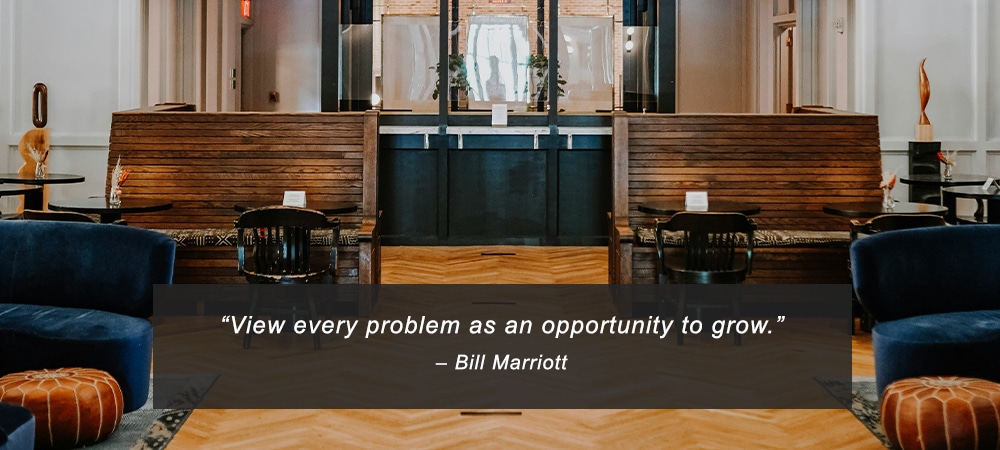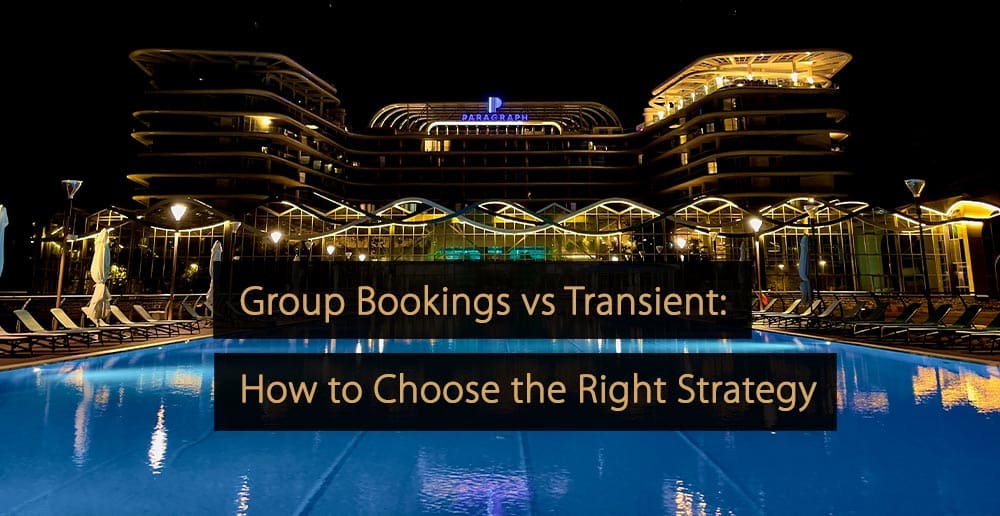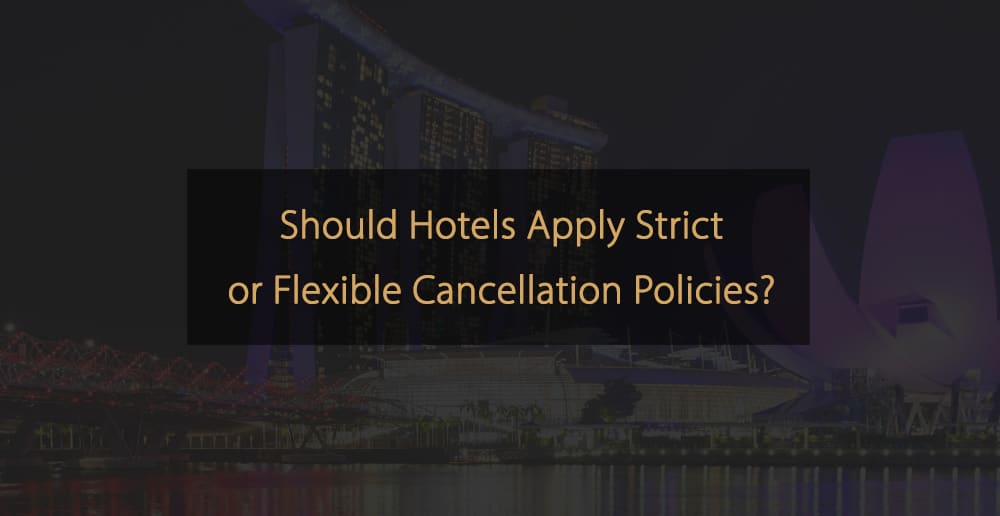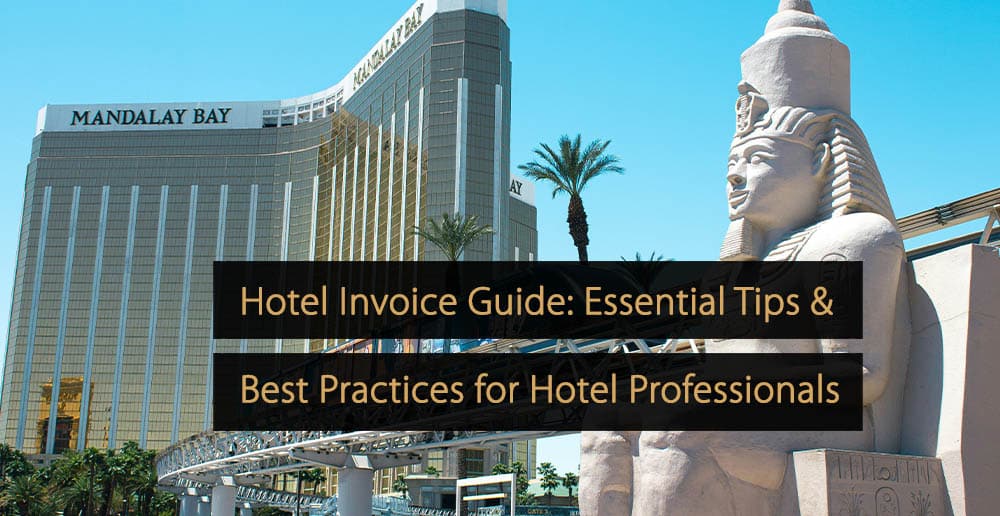Maximizing revenue is a top priority for hotel operators, and achieving this goal often requires the right pricing strategy at the right time. Making room rate adjustments based on demand, customer segmentation, and other factors can be the key to overall business success. In this article, we offer insight into 14 pricing strategies that hotels can adopt in their revenue management strategy to increase the amount of revenue they generate.
Table of Contents:
- What Is Revenue Management?
- 1. Pricing Strategy Based on Forecasting
- 2. Rate Parity Strategy
- 3. Price Per Segment
- 4. Discount Codes to Stimulate Direct Bookings
- 5. Offer a Package
- 6. Length of Stay Strategy (LOS)
- 7. Cancellation Policy
- 8. Upselling
- 9. Cross-Selling
- 10. Excellent Review Management
- 11. Dynamic Pricing
- 12. Market Segmentation Pricing
- 13. Customer Loyalty Programs
- 14. Competitor Pricing
- What Is Total Revenue Management?
What Is Revenue Management?
A major part of hotel management involves optimizing financial performance. To achieve this, hotels need to predict or anticipate customer behaviors ahead of time so that pricing can be adjusted and the right distribution channels can be used. Revenue management is a technique that allows for this to happen.
In the article “What is Revenue Management?“ you will learn much more about how revenue management is defined, what it involves on a practical level, its main strategies, and the technology that can be used to enhance your hotel revenue management strategy.
1. Pricing Strategy Based on Forecasting
The single most important pricing strategy for hotels to master is forecasting, which allows them to set their prices based on anticipated demand. This should mean that the hotel room rate charged will depend on the demand. For instance, times of high demand may lead to higher room rates to maximize revenue.
A robust forecasting strategy relies upon accurate records, with historical data proving particularly useful, such as occupancy, revenue, room rates, and average spending per room. In addition, it is important to use data already in the books, such as reservations and any wider market trends.
This data can then be used to make pricing decisions. So, if your hotel has historically experienced low demand in January, strategic considerations are associated with that. For example, you could consider lowering prices in January to build demand or raising prices to maximize revenue from the smaller customer base.
According to the research published in the Journal of Revenue and Pricing Management, Marriott International has led hotel revenue management since the 1990s with its “One Yield” system. Marriott uses automated tools that forecast demand and recommend pricing for 160,000 rooms across various brands like Marriott, Courtyard, and Residence Inn. By the mid-90s, these systems, especially the Demand Forecast System, were generating an estimated $150-$200 million in annual revenue by optimizing pricing and length-of-stay strategies.
Further information and some top tips related to forecasting can be found in the article “Forecasting Tips to Improve Your Revenue Management Strategy”.
2. Rate Parity Strategy
A rate parity strategy involves maintaining consistent rates for the same product across all online distribution channels. The key benefit of this is that it provides transparency for consumers. It is also often a prerequisite for advertising rooms through online travel agents like Expedia and Booking.com.
The primary challenge is that OTAs charge commission, and paying this while charging a low rate can eat into the revenue you would have earned through direct bookings. However, direct bookings can be stimulated in ways aside from simple room rate adjustments, as we will cover later in this article.
IHG Hotels & Resorts takes rate parity a step further with its Best Rate Guarantee. If a lower rate is found on a non-IHG site, IHG not only matches it but also awards five times the room rate in IHG One Reward points, up to 40,000 points. Travel experts frequently cite IHG’s policy as one of the most generous in the industry.
Video: Rate Parity Explained
3. Price Per Segment
One of the most commonly used pricing strategies for those in the hotel industry is price per segment, where you offer the same product at different prices to different types of customers.
While “open market” prices should be subject to a rate parity strategy, prices for corporate segments could be lower, especially if they commit to a certain number of rooms or meals. Another option would be to sell multiple rooms to travel agents for a lower rate so the travel agent can include them in packages.
Industry experts affirm the long-term value of segmentation. Paul Novak of Whitman Peterson remarked, “I don’t see how it ever goes away,” emphasizing its role in sustaining sales focus and performance clarity. Micajah Sturdivant, CEO of MMI Hospitality Group, added that using segmentation helps hotel sales teams plan better and understand their guests more clearly. He explained that it also gives the team a clear way to track results and stay accountable.
Leading brands such as Hyatt use a smart pricing strategy that targets multiple guest segments. According to an analysis by Latterly.org, Hyatt understands how important it is to meet the needs of various groups, such as business travelers, families, and luxury travelers. The company creates special offers and services for each group to improve their experience and attract more bookings.
According to Hyatt’s Mid-Year Consumer Sentiment and Travel Expectations Report, more than 88% of people still plan to travel for leisure. By offering the right services and pricing to each type of guest, Hyatt can maintain full occupancy, enhance guest satisfaction, and increase its revenue. This is a great example of how a hotel can benefit from segmentation by understanding what each group wants and giving them exactly that.
Table: Examples of Price Per Segment Hotel Pricing Strategies
4. Discount Codes to Stimulate Direct Bookings
Although a price parity strategy may prohibit some pricing incentives that can stimulate direct bookings, one highly effective strategy involves using discount codes to encourage future direct bookings. According to the Digital Hotel Operations Study by H2c, around one-third of hotel bookings are now made via direct booking channels.
So, when a guest visits your hotel or property after booking through a third party, you could offer them a discount code for any future direct bookings they make with you. This has the dual benefit of encouraging repeat business and allowing them to book directly if they opt to stay in your hotel again.
IHG Hotels & Resorts offers one of the most compelling examples through its Best Rate Guarantee. If a guest finds a lower price on a third-party site, IHG will match it and award up to 40,000 IHG One Rewards points. These points can be worth over $200, especially when redeemed at high-end properties. Additionally, IHG’s “Your Rate” program provides member-only discounts when booking directly.
According to Skift, after IHG launched “Your Rate” at over 4,500 hotels, direct bookings increased by 2%, while OTA bookings decreased by the same amount. This indicates that offering better deals to direct bookers enables hotels to save on commissions and build stronger customer relationships.
5. Offer a Package
Another solid option for hotel managers attempting to maximize revenue is to create packages that allow customers to pay for more than just a room. Additional items, services, or products that may feature in a package deal include meals, bicycles, access to golf courses and equipment, and so on.
With packages, the actual room rate may be lower than the equivalent rate for an identical room. However, your hotel will be able to sell more products simultaneously.
According to Expedia Group, properties that offer travel packages typically see a gross booking value increase of over 5%, rising to more than 10% at hotels with 25 or more rooms or those outside the U.S.
Moreover, package bookers stay longer (average ~11.8 days) and cancel 50% less than standalone reservations. For example, K+K Hotel Central (Prague) experienced a 140% growth in package business and a 45% increase in revenue year-over-year after launching bundled promotions via Expedia.
For more information about hotel packages, read “Hotel Packages: Tips to Optimize the Use of Hotel Package Deals.”
6. Length of Stay Strategy (LOS)
As the name implies, a length-of-stay strategy adjusts pricing based on the length of the stay. In some instances, such as when demand outweighs supply, it can be beneficial to implement a rule where guests are ‘obligated’ to stay a minimum number of days. In such cases, lower rates may not always be necessary.
On the other hand, when demand is lower, you can potentially encourage guests to stay longer by offering them a lower rate if they stay for multiple days, resulting in fewer unused rooms overall.
According to a global study by OTA Insights, which surveyed over 50,000 hotels, 63% of hotels rarely offer LOS discounts. This finding surprised many industry experts. Gino Engels, Chief Commercial Officer at OTA Insight, noted: “These are large, international chains, using sophisticated tools to present up-to-date rate information to their guests, 30-plus days in advance. This makes it all the more surprising that nearly two-thirds of the hotels we looked at don’t apply length-of-stay discounting at all.”
Of the 37% of hotels that did offer LOS discounts, most did so for at least 10 days within the month reviewed. Discounts were usually no more than 15%, and were used most often in 3- to 5-star hotels. When applied consistently and strategically, especially in slower periods, LOS discounts can be a powerful way to increase both bookings and guest spend.
7. Cancellation Policy
A hotel’s cancellation policy can also factor into a pricing strategy and help increase revenue. For instance, one option is to charge a lower rate because a guest cannot receive a refund if they cancel the room, while higher rates are charged when guests have greater flexibility with cancellations.
This can be of particular value in hotels with high demand. By charging lower rates in exchange for no refunds, busy hotels can benefit from effectively being able to sell the same room twice in the event of a cancellation.
One of the first major hotel chains to use this strategy was Marriott International. In the 1990s, Marriott developed its Demand Forecast System (DFS), which introduced “fenced rate” logic. This means the system automatically offered different processes depending on how flexible the booking was. This strategy helped Marriott earn an extra $150-$200 million per year. Marriott also created a group bid-response system that brought $46 million in its first year by using cancellation and pricing rules for group bookings.
Many hotels, such as Hilton, Hyatt, and Accor, employ this strategy widely today. Accor Live Limitless also offers discounts for advance bookings, accompanied by strict cancellation terms.

Heiko Rieder, Senior Vice President Commercial & Distribution, Step Partners Europe“Strict and restrictive cancellation policies create the risk of turning business away, especially when competitors offer more flexible policies. Hotels with competitive advantages might have a position to apply strict policies and high rates during certain events or seasons, but generally, it is recommended to align cancellation policies with the competitive set.” Click here to read more about the benefits and risks of cancellation policies from our Expert Panel. |
8. Upselling
The basic principle of upselling involves encouraging customers to spend more on their existing purchases or bookings. It is a vital component of any effective hotel revenue management strategy.
It may mean encouraging guests to upgrade to a better room, paying a higher room rate for a more desirable view, or paying more for a king-size bed. Upselling is often most successful during the booking process, so promoting upgrade options while guests make their choices can be beneficial.
According to a study by 4Hoteliers, upselling has an average conversion rate of 6.04% and leads to about 14% more spending per booking. This results in a 0.84% increase in total revenue and a 2.66% boost in gross operating profit (GOP).
In Europe, the Middle East, and Africa (EMEA), around 59% of hotels offer upsell options in confirmation emails or pre-arrival messages. The average upsell amount from confirmation emails rose from $73 to $83 per booking in just one year, showing growing success.
9. Cross-Selling
Cross-selling is similar to upselling, but rather than encouraging customers to spend more on an existing purchase, it involves encouraging customers to make additional purchases on top of the one(s) already made.
Within the hotel industry, this typically refers to additional services, such as local tours, massages, or gym services. Annual industry reports indicate that ancillary revenue—the money made from selling extras—can make up more than 18% of a hotel’s total income.
Cross-selling is generally most effective after the initial booking, but before the guest arrives, so it is often best achieved through promotional emails.
10. Excellent Review Management
Finally, better reviews are likely to improve conversion rates. Meanwhile, guests are usually willing to spend more on hotel rooms with positive reviews because they can have greater confidence in their choices. Indeed, when two hotels offer a similar product, customers often choose the one with superior reviews. According to the State of Online Reviews Report by Podium, 93% of consumers say that online reviews impact their purchase decisions.
A landmark study by Associate Professor Chris Anderson of Cornell University revealed that for every 1-point increase in the ReviewPro Global Review Index (on a 100 point scale), hotels saw a 0.54% rise in occupancy, a 0.89% increase in ADR (Average Daily Rate), and an astounding 1.42% increase in RevPAR.
For this reason, a comprehensive review management strategy is important to maximize revenue. This strategy will likely mean striving to deliver an excellent customer experience, encouraging guests to leave reviews, and swiftly and competently responding to reviews and feedback posted on social media.

Sandra Gannon, Commercial Consultant, Revenue Puzzle“Reviews on any platform are vital for a hotel’s success. You can only demand a certain price based on customers’ feedback. We traditionally compare our rates to the competitive set but it becomes more and more apparent that you can only charge as much as you can offer. This is challenging in the current staffing situation. I also believe hotels have stopped pro-actively pushing reviews as they are not 100% in control. Reviews should also be looked at as a source of information and analysed accordingly and therefore priced.” Click here to read how hotel review scores impact pricing strategies from our Revenue Management Expert Panel. |
11. Dynamic Pricing
Dynamic pricing is a strategy involving the adjustment of room rates in real-time, based on a variety of factors. Your prices can be influenced by demand, competition, occupancy levels in your hotel, local events, the weather, and more. One of the most successful pricing strategies in the hotel industry, dynamic pricing allows you to extract maximum value from bookings in high and low-demand periods. This helps optimize financial results for the context you are in.
Research from Coaxsoft shows that hotels using dynamic pricing saw a 15% increase in average occupancy, a 20% rise in total revenue, and up to a 30% spike in revenue during special events. These metrics prove that dynamic pricing not only increases profitability but also helps fill rooms more efficiently.
A modern dynamic pricing strategy will utilize software and complex algorithms to automatically calculate when price adjustments should be made and then make these adjustments across your distribution channels. For example, Marriott uses advanced algorithms to adjust prices based on factors such as booking windows and competitor rates, resulting in up to 30% more revenue during high-demand periods.
Video: Hotel Dynamic Pricing & Revenue Management Strategies
12. Market Segmentation Pricing
Market segmentation pricing is a strategy that involves targeting different customer groups with different prices. Customers may be segmented according to past behaviors, shared traits, and booking patterns. Unlike some other pricing strategies in the hotel industry, market segmentation pricing considers the fact that certain types of guests can be more valuable than others at the moment. It can help you to compete for key target groups, too.
Common segments include leisure travelers, business travelers, couples, families, and solo travelers. Hotels can use a market segmentation strategy to target a specific type of customer. For instance, if you are trying to attract business customers, you could target them with a lower rate than you charge leisure guests.
A study published in the International Journal of Hospitality Management shows that room rates alone explain 64.6% of occupancy variability; demand spikes tied to segmentable events (e.g., conferences) can be capitalized through segment-specific pricing. IHG, for example, segments by purpose, business, leisure, crew, and customizes packages and messaging accordingly.
13. Customer Loyalty Programs
A customer loyalty program is a means of providing rewards and incentives for customers who book repeatedly. Most commonly, these rewards are based on pricing, such as discounts or free room upgrades. Your customer loyalty program can play an important role in building a reliable base of customers. In addition, it allows you to attract more direct bookings, avoiding the fees associated with OTAs.
According to the Hotel Revenue Insights, the industry has seen a 69% increase in loyalty memberships over the past six years, adding over 500 million members collectively from 2018 to 2024. Marriott Bonvoy leads the hotel loyalty program sector with 228 million members, but Hilton Honors is growing rapidly and could surpass Marriott by 2026.
Loyalty-based pricing strategies in the hotel industry can keep customers returning, maximizing their lifetime value. In the process, you will also benefit from the collection of guest data. This information can then be used to develop your understanding of booking patterns and to tailor your services to individuals. Oracle Hospitality found that 77% of travelers are more likely to choose brands offering loyalty programs, and members generate 12–18% more revenue than non-members.
14. Competitor Pricing
A competitor pricing strategy is an approach where rates are set in relation to your rivals. You will need to carry out an analysis of competitors’ pricing strategies and consider your own place within the market. Using a competitor pricing strategy helps to avoid situations where your prices feel significantly out of step with the hotels in your competitive set. This can prevent customers from choosing your hotel instead of theirs.
Compared with other pricing strategies in the hotel industry, competitor pricing places more emphasis on alignment with other hotels. However, you do not simply match prices, as you need to consider whether you are also offering more than another hotel, and whether your brand is seen as being either more or less prestigious than theirs.
According to CBRE’s Hotel Brand Performance analysis, between 2013 and 2023, only 26% of hotel brands were able to grow RevPAR (Revenue per Available Room) faster than inflation. From 2018 to 2023, that number dropped to just 3%, mostly because of high inflation. Over the past 10 years, the best-performing brand family grew RevPAR by 2.7%, while the weakest grew just 0.3%. These statistics show that most brands are falling behind and highlight how essential smart pricing has become.
What Is Total Revenue Management?
Hotel owners looking to achieve the best possible financial results must optimize their revenue channels, not just the sale of hotel rooms. This is where total revenue management comes in, with the core concepts of revenue management being applied to all relevant areas, including food, beverages, leisure, and conferencing.
Read the “Total Revenue Management: How Hotels Can Maximise Their Revenue“ article for a more in-depth exploration of total revenue management as a concept. It includes information on its advantages, the key performance indicators that need to be tracked, and some specific tips on implementing a total revenue management approach.
Pricing Strategies in the Hotel Industry FAQs
Maximizing revenue in the hotel industry relies on implementing the right pricing strategies, which is an important part of your revenue management strategy. Typically, this requires the use of forecasting to understand and anticipate demand, as well as a willingness to adjust room rates strategically, use cross-selling and upselling techniques, and manage online customer feedback.
Did You Like This Article About Pricing Strategies?
You might also be interested in the following articles:
- Hotel Room Types & Room Pricing Tips for Hoteliers
- Hotel Dynamic Pricing Guide; An Essential Overview of All Price Tags
- How Often Should Hotels Update Their Pricing?
- Accommodation Service Providers: Successful Tips for More Revenue
- Restaurant Revenue Management Strategies for Successful Managers
More Tips to Grow Your Business
Revfine.com is the leading knowledge platform for the hospitality and travel industry. Professionals use our insights, strategies, and actionable tips to get inspired, optimize revenue, innovate processes, and improve customer experience.Explore expert advice on management, marketing, revenue management, operations, software, and technology in our dedicated Hotel, Hospitality, and Travel & Tourism categories.
This article is written by:
Hi, I am Martijn Barten, founder of Revfine.com. With 20 years of experience in the hospitality industry, I specialize in optimizing revenue by combining revenue management with marketing strategies. I have successfully developed, implemented, and managed revenue management and marketing strategies for individual properties and multi-property portfolios.










Good information, thanks for sharing.
Thank you, really nice post!
Informative post! A good pricing strategy can increase revenue. I think every hotel owner should read this post because this is an informative and great post about maintaining hotel prices.
Beautiful post. Thank you for sharing all information in such understandable manner.
This is very useful information!
So informative I think all hotel owners and managers should adopt these strategies.